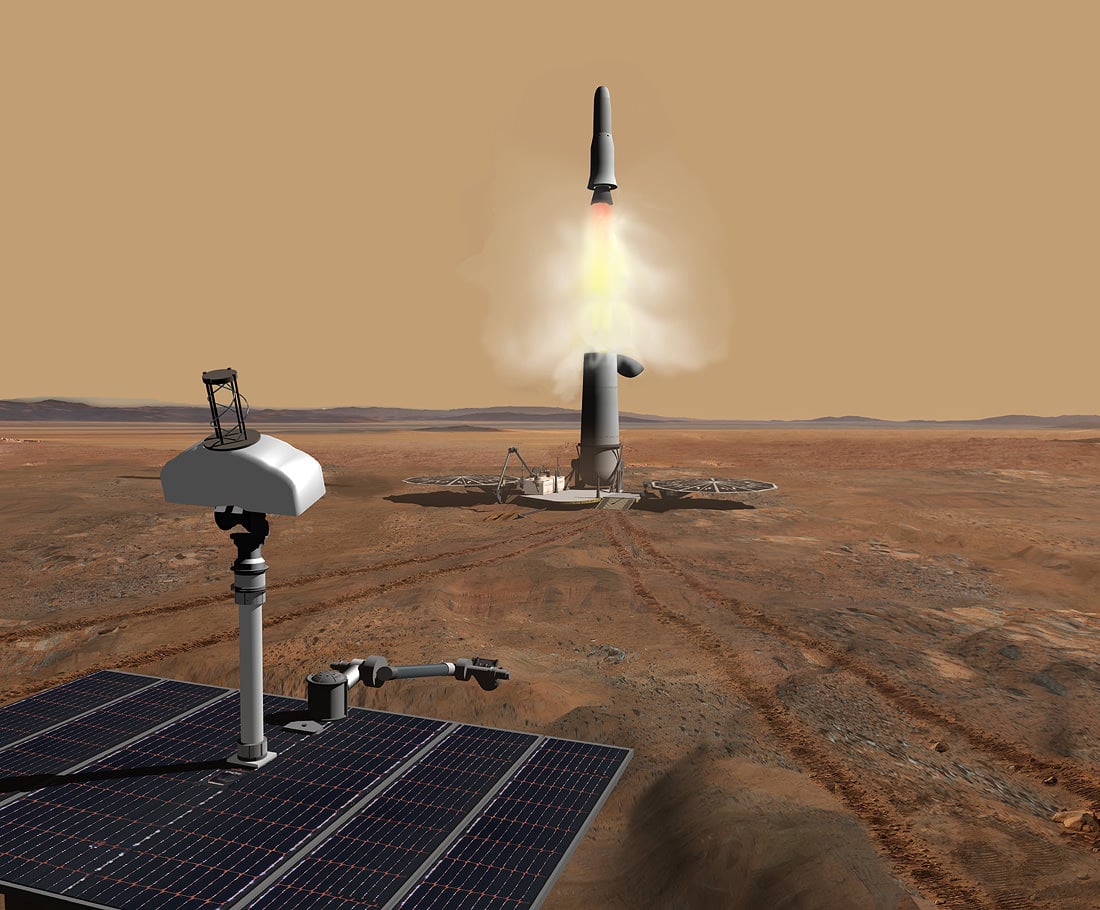Artist concept of a Mars Sample Return mission. Credit: Wickman Spacecraft & Propulsion.
A Mars sample return mission has long been a dream and goal of many planetary scientists. Getting Martian soil samples back here on Earth would allow them to be studied in ways rovers and landers just can't do. Of course, the big reason for getting samples of Mars back to Earth would be to really determine if there ever was – or is -- life on Mars. But a sample return mission would be "hellishly difficult," Steve Squyres of the MER mission once said.
But forget sending a lander, scooping up samples, putting them in a capsule and somehow rocketing them back to Earth. Human genome sequencer Craig Venter wants to send a DNA sequencing machine Mars, and beam back the DNA data to Earth. Not to be outdone, Jonathan Rothberg, founder the DNA sequencing company Ion Torrent, is working on getting his Personal Genome Machine to Mars and sending back the data.
In articles in the
Los Angeles Times
and
MIT's Technology Review
this week the two biologists seem to be in a race, of sorts, to see who could send their DNA machines to Mars first. Venter was quoted as saying, "There will be life forms there," Venter said, and wants to build a "biological teleporter."
Rothberg is looking to be part of a NASA-funded project at Harvard and MIT called SET-G, or "the search for extraterrestrial genomes."
An MIT researcher involved in the project, Christopher Carr, told Technology Review that his lab is working to shrink Ion Torrent's machine from 30 kilograms down to just three kilograms so that it can fit on a NASA rover, and they are testing how well the device can withstand the heavy radiation it would encounter on the way to Mars.
With NASA's current budget woes, a sample return mission likely couldn't happen until around 2030. But another Mars rover mission may be slated for 2018, if all goes well, and a DNA sequencer could potentially be part of the mission, the two biologists said. And an in-situ DNA sequencer avoids the potential pitfalls of a sample return mission.
"People are worried about the Andromeda strain," Venter said. "We can rebuild the Martians in a P-4 spacesuit lab instead of having them land in the ocean."
Sources:
Los Angeles Times
,
Technology Review
 Universe Today
Universe Today
